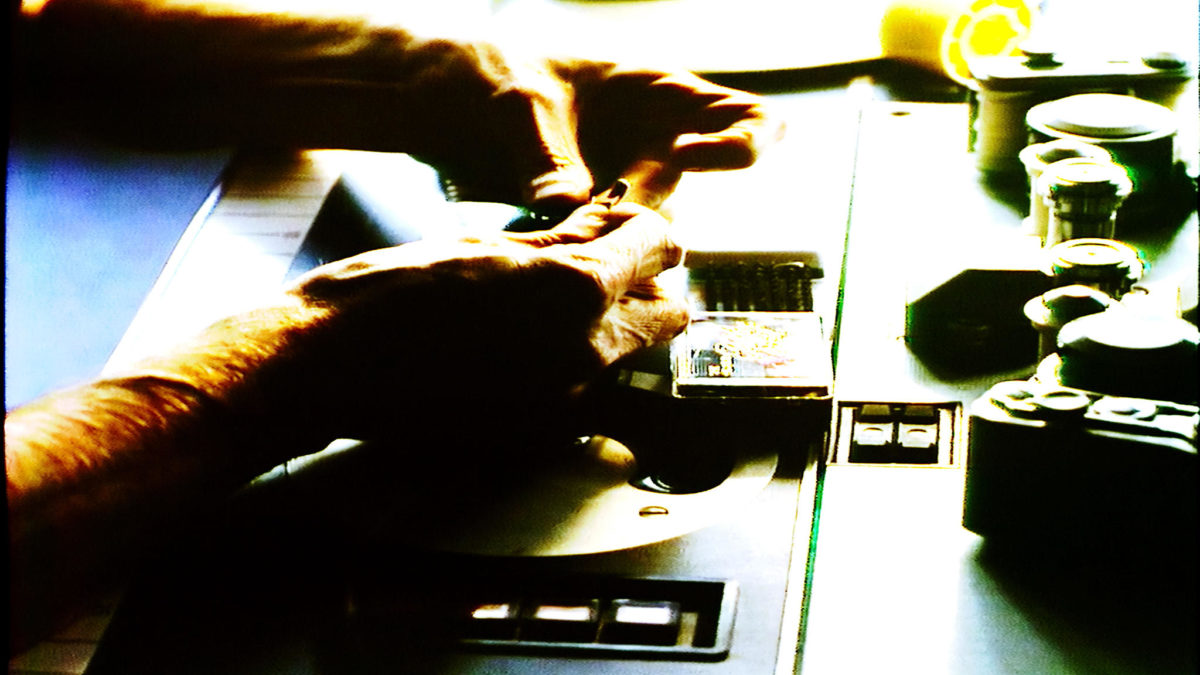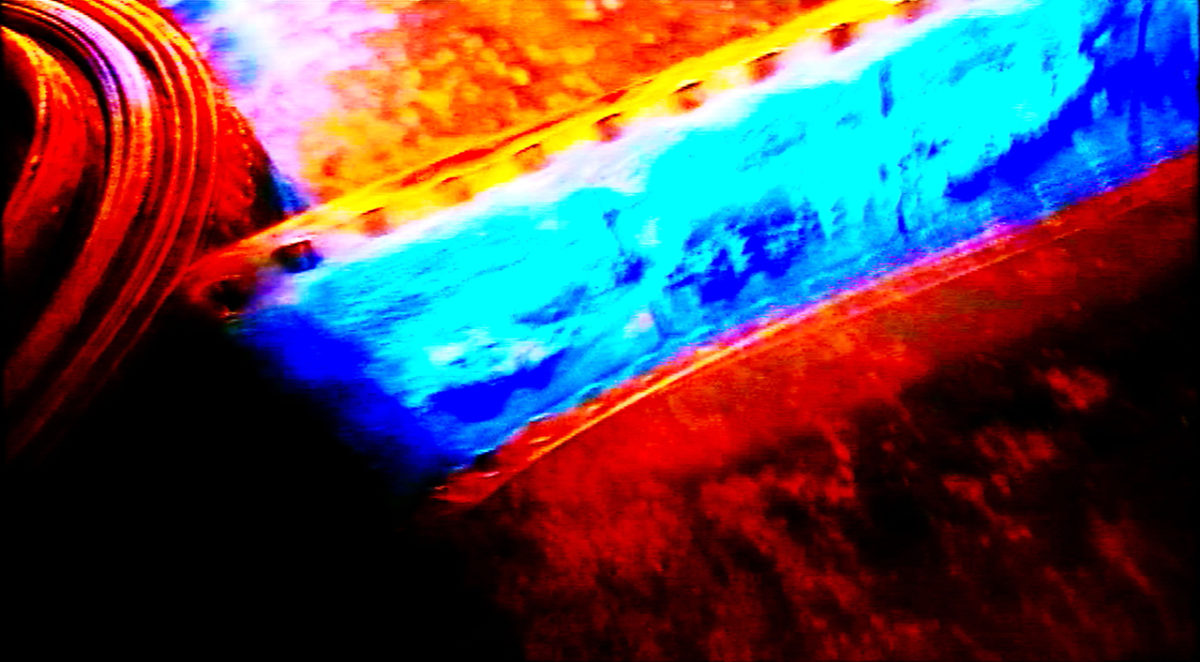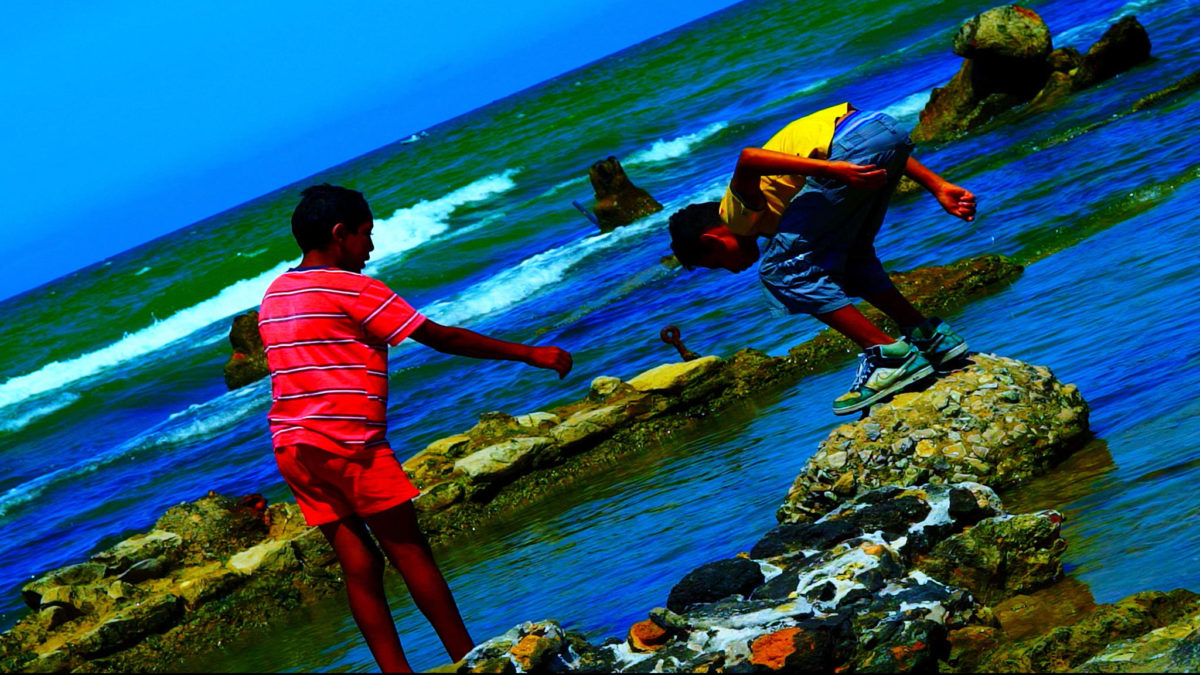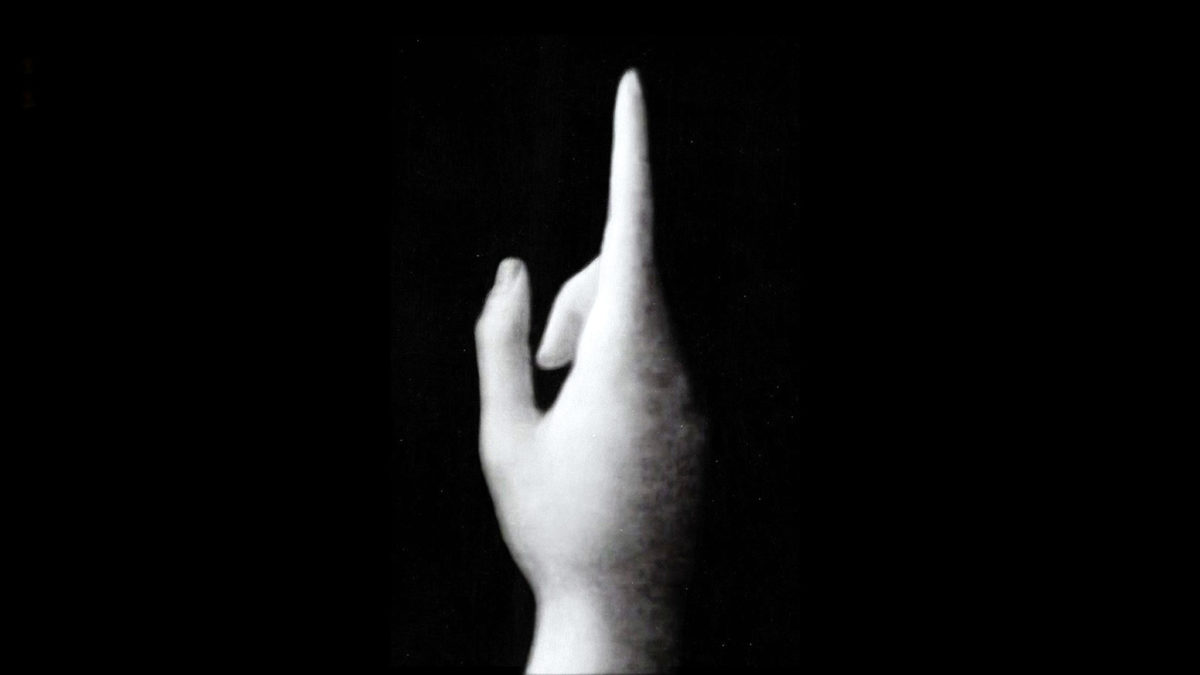Für Hannes und Richard: lasst uns unser bestes Leben führen
Off all the ways of getting hold of books, the most laudable is deemed to be writing them yourself.
Walter Benjamin – Unpacking my Library
The End of Histoire(s)
It can be no coincidence that Susan Sontag, who in her famous essay titled Against Interpretation called for an erotics instead of a hermeneutics of the arts, spent a lot of her non-fiction writing on the works of Jean-Luc Godard. Few careers have been made up of works as difficult to explain hermeneutically as those of the, by now almost 90 year old, Monsieur Cinéma himself.
What started with the playful self-reflectivity of the Nouvelle Vague ended in 1967 when at the closing of his film Week-end JLG, as he occasionally likes to call himself, declared the end of cinema. A long period of experimental video projects followed wherein he collaborated with different partners, of whom Anne-Marie Miéville was the most steadfast, on an attempt to liberate the image so it could support the Marxist revolution post May ’68. This lesser known period of his career would eventually culminate, before his retour au cinéma, in the five-hour Histoire(s) du cinéma that in its shattered comprehensiveness aspired to nothing less than overseeing a complete century of visual culture and the short 20th century that saw itself reflected therein.
The tension between these two hi(s)stories is the focal point of this monstrous collage completely made up of archival images, if by archive we consider the whole of manmade (moving) images, that are constantly overlaid on and juxtaposed with one another in order for them to contradict, complement and attack each other. The most intriguing aspect of this (without a doubt) magnum opus is the idiosyncratic philosophy it tries to expound visually, namely how cinema has made itself obsolete when it did not succeed adequately in bearing witness to or being a document of the horrors the century in which it came to fruition had known so exceptionally many of. (All though it might also be that the commonplace of the seemingly exceptional number of horrific events is the result of exactly this possibility of capturing them in what we call the collective memory.) Cinema is guilty because it shirked its duty. So far for the end of histoire(s).
The Image Book (2018), Godard’s latest outing, could be read as an addendum to the Histoire(s); it would not be the first one. Yet at the end of this new chapter, for the first time Godard seems to be hinting at a possible escape route.

Moments of Truth
The Image Book consists of five parts—like the five fingers of a hand, and according to JLG we need to think with our hands to reinstate the tactility of the world—that overflow into each other and respond to one another dialectically. We can only guess at the origins of most of the images collected here, and one way of experiencing this collection could be a guessing or even drinking game, but that is of course not the point. What Godard, once more, attempts is to liberate the images he has found wherever, whenever; to liberate in order to, in the words of Hannah Arendt, arrive at ‘moments of truth’. These so-called moments of truth are to be found like oases in the desert, unexpectedly and unforeseen. Even a Michael Bay film can be the harbour of one of them and is therefore included in The Image Book. As was already stated in Histoire(s): “A small rectangle of 35 mm, has the possibility of redeeming the whole of reality.”
Translated into mythological terms we are offered a narration of the story of Orpheus in the prologue of The Image Book. A woman’s voice recounts how he returns from the Hades and it seems as if Godard explicitly states his mission here: to return from the valley of cinematic shadows with a song that will bring to tears even man, this strangest of animals.
The first part or finger of the film has been given the title ‘Remakes’, few moments later stylized as ‘RIM(AK)ES’, or rhymes, in the characteristically Wittgensteinian wordplay Godard is so fond of. The cavalcade of images seems to follow an almost clear course here but what it appears to suggest might be one of the more controversial stances of the film. Scenes from the distant and not so distant past alternate to give the experience of an eternal recurrence of the same which culminates in a bringing together of the Nazi’s (another one of JLG’s obsessions) throwing people in the water from Rossellini’s Roma città aperta (1945) and propagandistic images from Daesh executing prisoners in the same manner. By using footage from Daesh’s executions three times (possibly even more), each time cut next to an earlier reverberation out of the same executioner’s song book, something becomes chillingly and lucidly clear. It took me a second viewing to make out what this ‘something’ was. The whole iconography of Daesh has been predominantly lifted from Western visual culture’s depiction of crime. The West has imagined Daesh. The eternal recurrence of the same is an endless vendetta.

Technological Revolutions
The second part, called ‘Nights of St. Petersburg’, diverges into a meditation on revolution by way of the Soviet cinema that is supposed to be a counterbalance for the dream factory of the reviled Hollywood. The cinema of montage, with its most famous representative Eisenstein, but especially Dziga Vertov, has been of great influence on Godard’s thinking on and through cinema because it was supposedly the first time in its then nascent history cinema started thinking about the manipulation of the kinetic image itself and made it the theme and problem of its own practice. Thinking with our hands, once more.
Contrary to the aforementioned dream factory that had no reverence for the workers operating this and every other factory, its Soviet contemporaries researched a way of using the image as a revolutionary means that did not aspire to represent (and thus rape or violate, as we will see further on) reality but change it, as the old Marxist adage had it, by making visible and thus changeable the prevalent power structures that confined the possibilities wherein the image could be born. Of course, as with all philosophy, Marx was not someone to foresee the difference between theory and practice and therefore it might be said his cinematic offspring failed in much the same way as he did. As a critic it is difficult to disagree with Marx, as a revolutionary prophet he left a lot to be desired.
That is why Walter Benjamin seems to be a better key to unravel the Go(r)d(ard)ian knot at hand here. As a continuation of the typographical jokes and characters reading mostly Marxist manifestoes out loud in the films of the sixties, Godard has reverted to citing literary works as diverse as they are canonical on the soundtrack of his films. Apart from directly quoting the author himself, this whole dialectical practice of citation might be the reason why Benjamin, with his idiosyncratic alliance between messianism and Marxism and his dream of compiling a book solely made up of quotations, might be considered close kin to the historical works of Godard. His description of the Angelus Novus (based on Paul Klee’s famous etching) has made indelible traces on the modus operandi of the work JLG cut out for himself here.
The specific Benjaminian concept of the ‘dialectical image’ is a way of trying to grasp what happens inside a photograph, essentially the capturing of reality, while at the same time insisting there is more than meets the photographic eye. This ‘more’ refers in the first place to the specific conditions in which this image became possible, therefore the image is not only a capturing of what can be seen through it but also, undeniably, the story of how this exact capturing of reality was made possible. Subject and object dance or fight with each other inside the frame.
A meditation on cinema as a revolutionary means will therefore inevitably also be a meditation on cinema as a technological innovation that incarcerates reality into a new sphere of experience of images wherein the power structures that lay at the basis of these images are no longer invisible but are forced to emerge through this mediation so they can be recognized in hopes of finding, what Benjamin calls, redemption.
The many directorial manipulations, from slow-motion over colour grading and ratio-readjustments to superimposition and especially the radical isolation of image and sound (or as one title card calls it “Image et Parole”), are as many artificial attempts at liberating the image by stripping it of its status as ‘innocent medium’ (It was only a movie!) and explicitly exposing it in all nakedness as an opening through which matter can fill itself up with meaning.
For Godard this is nothing less than a religious matter, as he makes clear when he, coughing, gurgling, almost audible dying, announces on the soundtrack that humankind might have made a mistake by sacralising texts (“the Torah, the Bible, the Qur’an etc. etc.”) and instead would have done better by looking for a primal image. An image that in its complexity could have escaped literal understanding so that less would have been lost than happened in the translation of the Word when it became flesh. With The Image Book Godard tries to meditate what would have happened if ‘in the beginning’ the Image had been.

Trains and Laws
The third and fourth part elaborate and vary on these already introduced themes. ‘Ces fleurs entre les rails, dans le vent confus des voyages’, named after a verse by Rilke, recapitalizes the ancient observation of the simultaneous invention of trains and cinema. The first ever film projection before a paying audience was of L’Arrivé d’un train en gare de La Ciotat (1895) and it has become part of audio-visual mythology that the audience’s reaction was one of panic and hiding behind chairs, supposedly believing the train would actually enter the darkened room wherein they had gathered. Both the train and cinema have made it possible, a first in human history, to experience the world à plus grande vitesse then had been possible when man was still the measure of all things. The horizon against which man had lived his life had suddenly turned out to be a mere outpost beyond which a whole new world had lain hidden from the naked eye. The enlargement of our reality upon the silver screen made possible by the camera, put the everyday up for renewed scrutiny, which was only possible because of this alienation. Madeline + Train = Sheer Delight (2011), a viral YouTube-hit, is used in this chapter as an attempt to retrieve some of the innocence and wonder this new way of seeing had brought to surface.
The next to final chapter, named after Montesquieu’s De l’esprit des lois, concerns itself with wild growth of the Word as exemplified by the proliferation of law-making and the spectacle that it has turned into in recent times. Once more Benjamin seeps into the discourse as another title card reminds us that every law is the mere reminder of a collective crime, a sentence directly lifted from ‘On the Critique of Violence’ by our favourite Saturnine thinker. A eulogy and elegy for Europe, in one. The old continent that prides itself on its Enlightenment and Civilization but whose words, words, words have not been able to prevent a single one of its (auto)genocides. The curriculum mortae of our culture does not particularly lift the spirit. Two thirds into this procession of violence the viewer might experience the overpowering of material fatigue. Nil novi sub sole. But at exactly this point the movie switches to a different, slower gear.

Lost Paradises
The angel of history has no choice but to be transfixed by the ruins upon ruins amassing themselves before his eyes as the wind of progress blows him onwards and onwards towards the unclear future. But what if the angel were to avert his gaze and turn it sideways? What if we were to look, not for salvation, but for new possibilities, a new sensibility that might reframe our understanding of the history of the West?
In times of cultural appropriation looking for answers to specific Western questions outside the geography wherein they originated, has more often than not been unmasked as the consumerist tourism it all too often merely is. The practice of yoga is and never will be the answer to the pandemic of burnouts created by the late capitalistic rat race. It is the individual equivalent of buying pollution rights from so-called underdeveloped countries in order to maintain the status quo. Has Godard fallen into this trap? Is he praying for a deus ex Arabia?
The big difference with most of the images of the first four chapters and the big difference with most of the images from the Middle East that Western audiences are familiar with lies in the fact that what Godard shows seem to be images from the everyday life. Accustomed as we are to the Middle East as a region of bombings and revolutions, the eeriness we attribute to the streets and fields and cities that this last chapter ‘L’Arabie heureuse’ depicts, lies completely within ourselves. No bombs go off, life goes on. Godard is showing us that the prejudices and biases through which we look can be unlearned. If he falls into the trap of orientalism—and to be honest I might not be the ultimate or even most equipped judge to pass this judgement—his orientalism is more an indictment of the Western way of culpable watching than a declaration of a presumed Eastern innocence. Instead of referring to the East as a moral copout he asks us to learn how to see things anew.
Taken from mostly unknown movies that were randomly provided by a Swiss production company, the representation of the Middle East happens in its own voice. Albeit of course nevertheless seen through the fingers of Godard’s editing. And yet the editing is slower, more languorous, as if life has been given the time again to unfold by its own tranquil pace, wary of the spectacle of historical moments that made the previous chapters in the end so tiresome.
It is not at all implied that the Middle East has no history (as Hegel, the founder of European historicism, notoriously said about Africa), but that in the Arabic imagination, as seen through these films, there’s more room for la vie vécue. Directing our attention towards these moments, small as they might be, could possibly be a way out of our particularly old-continental Western obsession with history. This maybe being the last possibility for us to redeem the image from its historical weariness. The lost paradise is the loss of a way of seeing as Proust already knew when he said that the essence of travel was not seeing new landscapes but seeing with new eyes. Godard once said cinema started with Griffith and ended with Kiarostami. The Image Book is a visual argument to make the same journey: from the pomposity of spectacle to a renewed sensibility of life.
